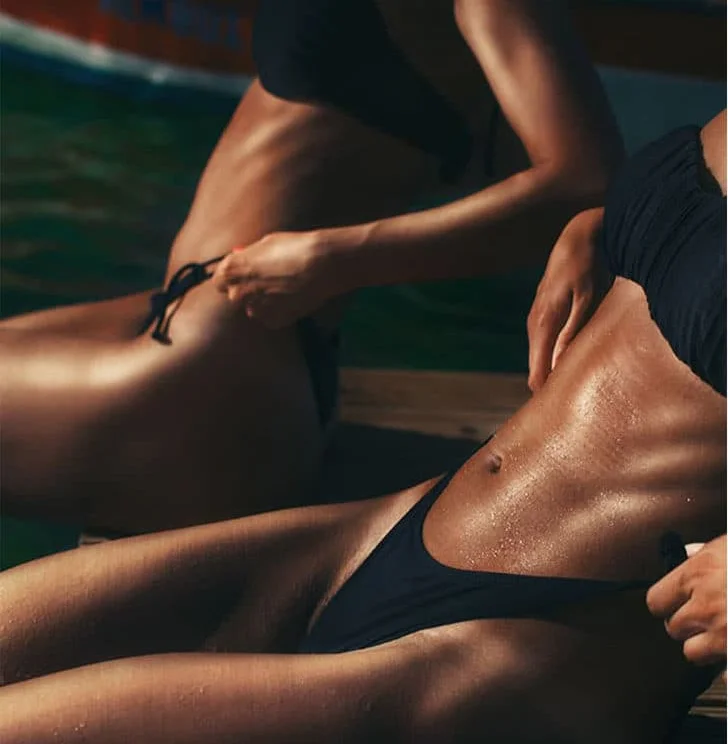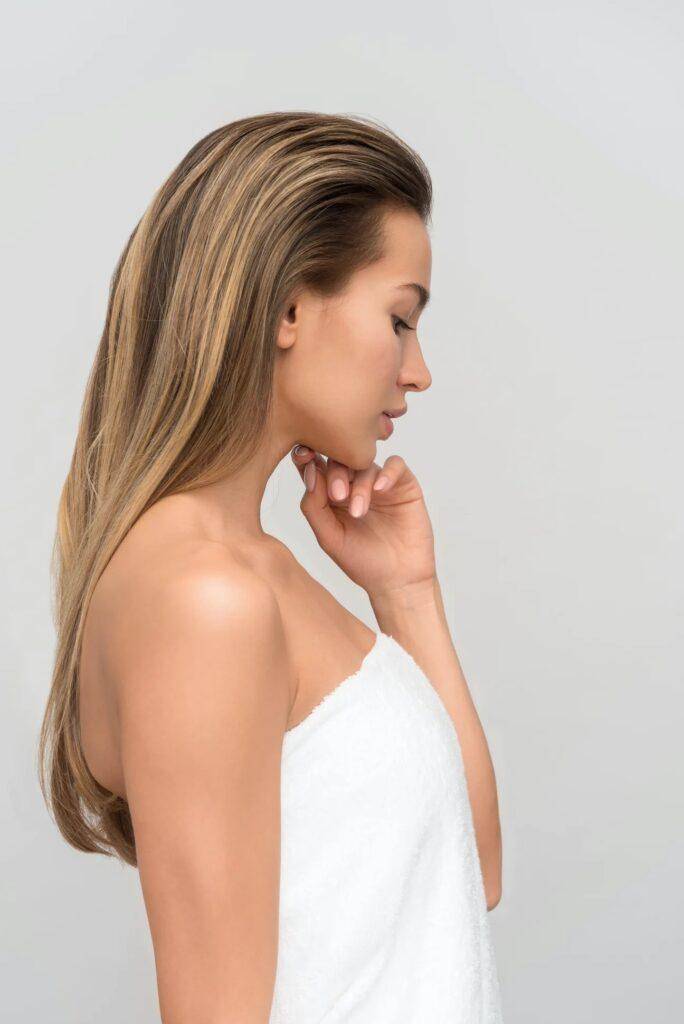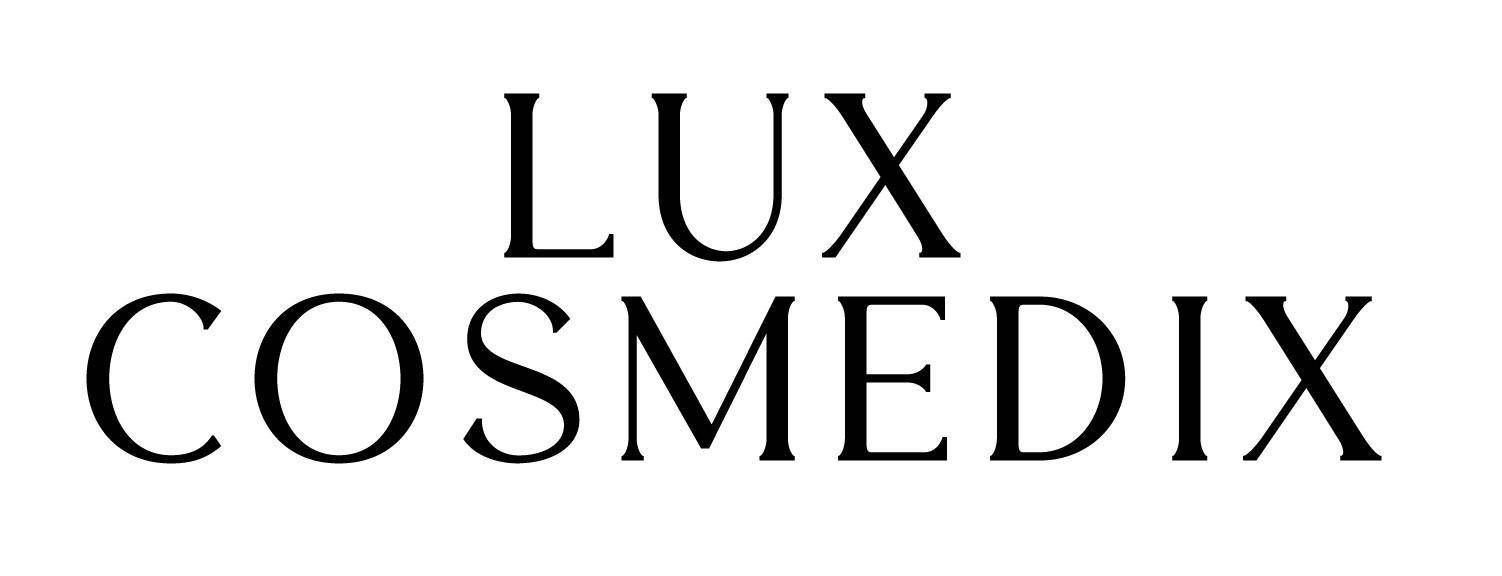
Whether it’s to prepare for a vacation in the sun, look good for an event, or to simply to look your best, an airbrush spray tan from Lux Cosmedix will give you flawless tan every time.
Lux Cosmedix uses only the highest quality ingredients, the highest quality ethically sourced organic, vegan, and hypoallergenic ingredients to ensure 100% satisfaction-Our exclusive tanning solutions.
Here are ALL the DOS you need to know to ensure a quality spray tan.
DO Exfoliate prior to your spray tan. Either use a body scrub or loofah on your entire body in the shower or try dry-brushing. Shave prior to your spray tan. This is essentially another form of exfoliation as it takes the top layer of your skin with it. Apply a body butter to areas that are prone to grab more solution like knees, backs of ankles, elbows and definitely your hands and feet. I say body butter rather than lotion because it creates more of a barrier. Moisturize before a spray tan. If your skin is dry, your tan will flake off with it. Moisturize in the days following. This will retain your tan and keep it looking fresh longer. Pat yourself dry; don’t rub after showering.
What should I expect after my spray tan?
After your initial spray session, the solution will continue to get darker over the next eight to 12 hours. It’s best to wait four to six hours before showering to avoid washing off any formula. For special occasions, we recommend getting your spray tan the night before and sleeping through the night while allowing your color to develop.
Why choose Lux Cosmedix for spraytanning?
No Streaks Technology driven product with Lux Cosmedix for an even flawless tan with Spray Tan Technology, premium self-tanning ingredients. Long-Lasting Our premium ingredients, including Eco-Certified DHA will leave you glowing for days Easy & Convenient You can get a spray tan or self-tan whenever you need to glow No odor icon No Orange Mystic Tan uses only premium ingredients, including Hyaluronic Acid for a natural-looking tan, every time.
Here are ALL the DONTS you need to know to ensure a quality spray tan.
DON’T Exercise, bathe or swim sooner than 8 hours after your spray tan. It will result in streaks. Mistake a sunless tan for sunscreen. There is no UV protection in sunless tanning solution. Bother with the instant bronze solution they may offer you. Wear light-colored clothing or your prettiest lingerie. The self-tanning solution can stain your clothing, so choose loose, dark clothing instead. Wear any jewelry or hair ties on your wrist. I’ve made this mistake. You’ll have a white line just as you would with regular tanning. Apply deodorant if possible before your spray tan. “Because deodorant is an aluminum-based product, you may notice that your armpits have a green hue after tanning,” says Jungmann. This happens when the aluminum in the deodorant reacts with the sunless solution. It’s best to arrive with clean, fresh skin so that there are no barriers for the application,” Hang out in a chlorinated pool or hot tub. You’ll exfoliate that tan right away!
What’s the best way to maintain my color?
After getting a spray tan, it’s important to keep your skin moisturized. The more hydrated your skin is, the longer the color will last. We recommend refraining from any heavy physical activity or swimming in order to preserve your tan.
Did You know?
Melanoma is increasing faster in females 15-29 years old than males in the same age group. In females 15-29 years old, the torso is the most common location for developing melanoma, which might be due to high-risk tanning behaviors. Skin cancer is the most common form of cancer in the United States — more than one million new cases of skin cancer will be diagnosed in 2010. The incidence of malignant melanoma, one of the deadliest forms of skin cancer, has more than doubled between 1973 and 1996. Melanoma is more common than any non-skin cancer among people between 25 and 29 years old. Basal cell and squamous cell carcinomas are the two most common forms of skin cancer, but are easily treated if detected early. The incidence of melanoma has been steadily increasing for the past 30 years. Since 1992, melanoma has increased 3.1 percent annually in non-Hispanic Caucasians, but in recent years it is increasing more rapidly in young white women (3.8 percent since 1995) and men age 65 and older. The two types of ultraviolet radiation are Ultraviolet A (UVA) and Ultraviolet B (UVB). UVB has long been associated with sunburn and UVA has been recognized as a deeper-penetrating radiation that causes more damage.
Trusted
Lux Cosmedix Laser Clinic has some of the best Medical Cosmetologists for in Durham, ON.
Our Medical Aestheticians are highly qualified and trusted by thousands of customers. We undergo regular in-house training to keep updated of latest technologies.


Speak with a Medical Cosmetologist today at Lux Cosmedix Laser Clinic we’re committed to helping you choose the best treatments to obtain your beauty and wellness goals. Talk to us today for a free consultation!
We gain a wealth of insight into everything skin, hair and body, which we’re happy to share with you. Scroll right through for what matters most to you.
It’s science made simple.




